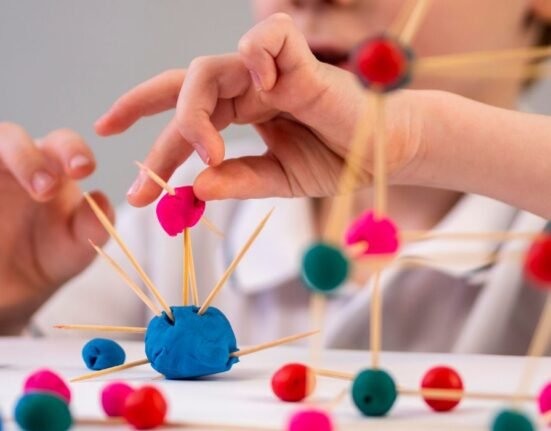Memory is a cognitive process that refers to the brain’s ability to acquire, store, and recall information or experience, enabling the individual to learn, adapt, and navigate their surroundings based on previously acquired knowledge and interaction. Memory is a complex system that includes various stages, like:
- Encoding
- Storage
- Retrieval
In the quest to optimize memory function, numerous scientifically validated techniques have emerged, offering effective strategies to enhance learning, retention, and recall capacities. These techniques encompass a spectrum of approaches, ranging from associative learning and mnemonic devices to the incorporation of lifestyle habits that increase cognitive processes.
6 Science-Backed Memory Tips and Techniques:
1. Making associations
Association is a technique in which newly encoded information is associated with or linked with pre-existing information or knowledge, or it means creating a connection between different pieces of information to enhance memory retention. According to a theory of dual coding given by researcher Allan Paivio in 1960, information is stored in two ways: verbally and visually. Forming a visual association is particularly powerful. It includes strategies like turning the sound of names into images.
Example: You are learning a new language and want to remember the word for cat (Gato in Spanish). You create an association by visualizing a cat on top of a giant letter “G” (for the gato), linking the sound gato to the visual image of the cat.
2. Creating mnemonics
Mnemonics are devices that help people remember information more easily. Techniques like acronyms, for example, BODMAS for the order of operations in math, acrostics, for example, my very educated mother just served as nine piazzas for remembering their order of planets, or other techniques are used in mnemonics that create associations or patterns to facilitate the recall of information. According to researchers at the National Institute of Mental Health, mnemonic strategies significantly improve memory performance in clients.
3. Active recall
It involves the process of actively retrieving information from memory rather than passively reviewing it. The act of recalling information helps in strengthening memory, and according to studies by Henry L. Roediger III, active recall improves long-term retention compared to passive review. This technique engages the brain in actively recalling information and strengthening the neural connections associated with that memory.
Example: After studying a chapter of a science book, you close the book and try to recall the key by looking at the material. Another example is the use of flashcards.
4. Chunking
It is the strategy of breaking down the information into smaller or more manageable units, or chunks to store it in a better way. By organizing the information into smaller groups, it becomes easier to process, understand, and remember. The concept aligns with Miller’s law, which suggests that the average person can retain about seven chunks of information in their working memory.
Example: When you memorize someone’s phone number, you can change them into smaller groups, for example, by breaking 6429 8712 into small, digestible chunks of 64-29-87-12.
5. Method of loci
Also known as the memory place technique, this method involves a society’s information about a specific location in a similar spatial environment. This is the most ancient mnemonic device that associates a piece of information with a mental journey or physical space. Research published in the journal Neuron has shown that using the spatial memory system, like the method of loci, can significantly improve recall by leveraging the brain’s spatial awareness and navigation skills.
Example: linking the items on the shopping list with the specific location in your house; for example, imagining a gallon of milk on the sofa, an apple on the dining table, et cetera. Later, when you mentally walk through the house, it’s easier to recall the items.
6. Share what you are learning
It is a technique for teaching or explaining new information to someone else. This practice solidifies one’s understanding by engaging the brain to organize and explain the material. It is based on the Protégé Effect, which is a psychological phenomenon where individuals learn and retain information more effectively when teachers share the information with others. Teaching to explain a concept to someone else reinforces one’s understanding and memory of the material.
Example: After learning a scientific theory, you try to explain it to a friend or a family member to reinforce the learning and recall information for better memory.
Simple ways to improve memory:
1. Exercise: Physical movements boost the blood flow in the brain, providing more oxygen and nutrients that help enhance cognitive functions, including memory. Exercise can be linked to the production of chemicals that promote the growth of brain cells and improve connections between them. Activities like walking, dancing, and running can prove to be very beneficial.
Read More: Why Is Exercise And Good Nutrition So Important For A Healthy Brain?
2. Sleep: Getting quality sleep is crucial for the health of our brain. It is during sleep that the brain processes and stores the newly acquired information, converting short-term memory into long-term memory. The memory solidifies during the dip stages. Lack of sleep can impair this transformation, and the memory will not be properly stored in the brain.
Read More: Sleep Breathing Affects Memory Processing: Research
3. Nutrients: Intake of a balanced diet of nutrients, especially those that increase brain health, can improve memory. Omega-3 fatty acids found in fish, antioxidants in fruits and vegetables, and vitamins like B6 and B12 are essential for brain function. According to the researchers, a high-nutrient diet can improve memory.
4. Meditation: Mindful meditation can be linked to improvements in attention, concentration, and memory. Regular meditation can enhance the brain’s plasticity and ability to focus, which directly supports memory formation and retention. Apart from that, meditation techniques also help in reducing stress, which can improve cognitive function.
5. Limited stress: Prolonged stress hurts memory and cognitive function. High levels of stress hormones like cortisol can interfere with the brain’s ability to form new memories and retrieve existing ones. Techniques like deep breathing, exercise, meditation, and engaging in hobbies or activities that bring joy can help reduce stress, thereby benefiting memory.
Conclusion
Exploring it through an innovative lens involves embracing a multifaceted strategy rooted in neuroscience and practical application. Recent advancements in its research have unveiled compelling techniques like space repetition, which optimize long-term retention by strategically reviewing information at intervals. Moreover, ongoing studies probing memory consolidation during sleep shed light on specific sleep strategies crucial for solidifying newly acquired information. Integrating cutting-edge neuroimaging techniques such as functional MRI empowers research to unravel the neural underpinnings governing memory processes. Additionally, cognitive psychology is evolving, and insight into memory biases contributes to understanding how our perceptions shape memory recall. The involvement of all the scientific and technical strategies in the process of memory enhancement has an influential effect on the learning and expansion of it.













Leave feedback about this